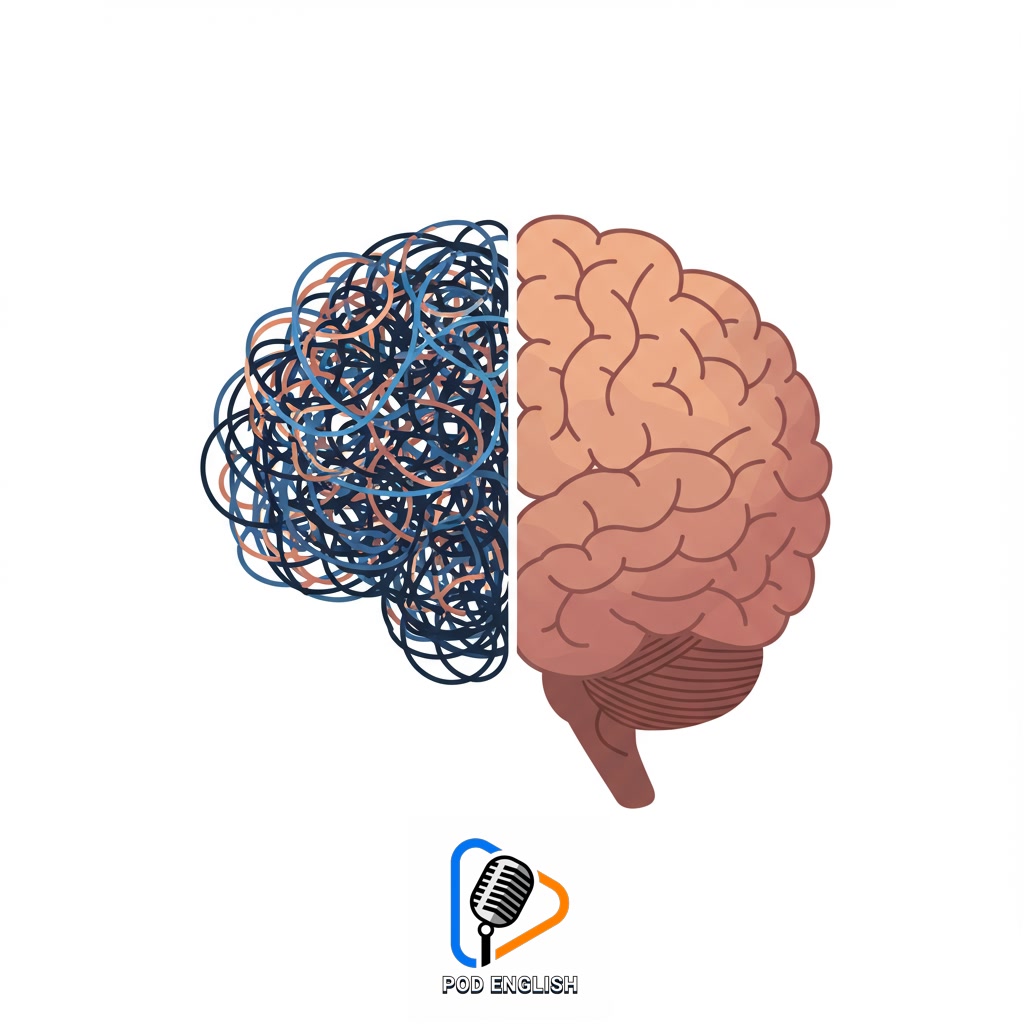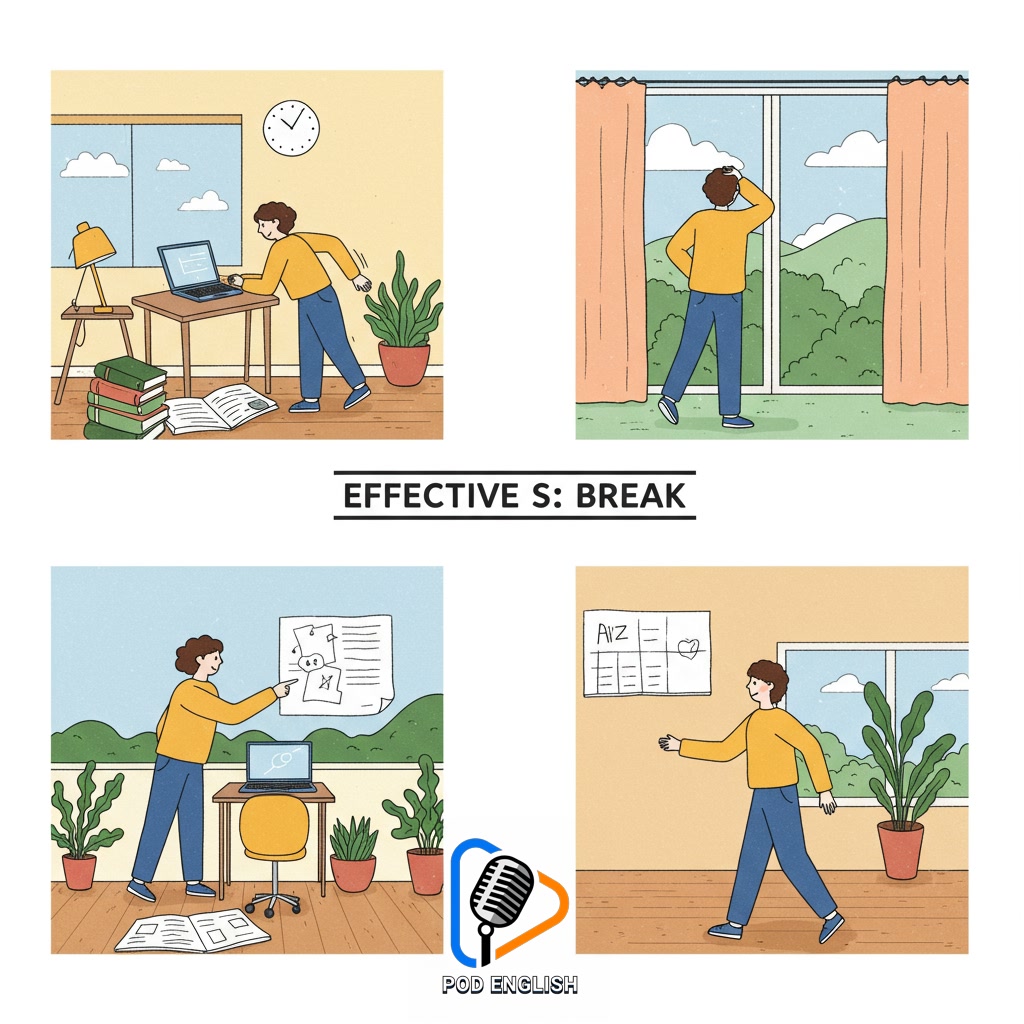Learn English
Unlock Better English Learning with Regular Breaks

Taking regular breaks is essential for optimizing the process of learning English. Integrating short pauses helps prevent mental fatigue and improves concentration. This strategy allows the brain to better process and retain new information. Ultimately, incorporating breaks makes the journey of acquiring English skills more efficient and enjoyable.
Table of Contents
- Section 1: The Importance of Breaks in Language Learning
- Section 2: Understanding the Science Behind Learning and Breaks
- Section 3: Types of Effective Breaks for English Study
- Section 4: Integrating Breaks into Your English Learning Schedule
- Section 5: Recognizing the Signs You Need a Break
- Section 6: Maximizing Retention and Focus Through Strategic Pauses
Section 1: The Importance of Breaks in Language Learning
Taking regular breaks is a crucial yet often overlooked strategy when learning a new language like English. Instead of powering through long study sessions, short pauses allow your brain vital time to consolidate new vocabulary, grammar rules, and pronunciation patterns. Think of it as giving your mental muscles a chance to rest and process the information you’ve just absorbed. This prevents burnout and mental fatigue, which are major hurdles in language acquisition. When you return from a break, your mind is refreshed and better equipped to focus, making subsequent learning more effective and improving your ability to retain what you’ve learned for the long term. Integrating breaks isn’t laziness; it’s smart learning.

Section 2: Understanding the Science Behind Learning and Breaks
Following from the idea that breaks give the brain time, this section delves into *why* that time is so valuable for learning English. Scientifically, focused study sessions require significant cognitive effort, leading to fatigue and decreased attention span over time. Taking a break allows your brain to shift gears. It’s not just resting; this pause is crucial for memory consolidation, moving new information from short-term to long-term storage. Breaks also help reset your focus, allowing you to return to your studies with renewed concentration and improved ability to absorb complex grammar rules or vocabulary. Understanding this biological process reinforces why short, regular pauses are a strategic tool for effective English acquisition, preventing burnout and optimizing retention.

Section 3: Types of Effective Breaks for English Study
To truly optimize your English learning through breaks, it’s important to choose activities that genuinely allow your mind to reset. Effective breaks aren’t just passive pauses; they involve shifting your focus away from intensive study. Simple actions like standing up and stretching, taking a short walk around the room or outside, or even just looking away from your study materials and out a window can be beneficial. Engaging in a brief, unrelated activity like listening to instrumental music or doing a quick, non-screen-based task also works well. The key is to give your brain a different kind of stimulus or simply a moment of rest, preparing it to absorb more when you return to your English books or exercises. These varied types of breaks help prevent monotony and keep your study sessions feeling fresh and productive.

Section 4: Integrating Breaks into Your English Learning Schedule
Integrating breaks effectively into your English learning schedule is key to maximizing their benefits. Start by planning your study sessions and explicitly scheduling short pauses every 45-60 minutes. Use a timer to signal the end of a study block and the start of your break. During these pauses, step away from your study materials and engage in a non-strenuous activity like stretching, walking briefly, or simply looking out a window. Consistency is vital; treat these breaks as non-negotiable parts of your learning routine, not just optional pauses. This structured approach prevents burnout and keeps your mind sharp for absorbing new vocabulary and grammar.

Section 5: Recognizing the Signs You Need a Break
Even with scheduled breaks integrated into your English learning routine, it’s equally important to recognize the spontaneous signals your mind and body send when you need an immediate pause. Pay close attention to common signs like finding your thoughts drifting easily, feeling restless, or repeatedly reading sentences without grasping their meaning. Increased frustration, a sense of being overwhelmed, or making frequent, uncharacteristic errors are also strong indicators that your focus is waning. If you catch yourself staring blankly at your study materials or feeling a strong urge to check your phone or switch tasks, these are clear signals of mental fatigue. Acknowledging these signs promptly and taking a short, unscheduled break can prevent burnout, refresh your cognitive resources, and significantly improve your ability to concentrate and absorb new information when you return to your English studies.

Section 6: Maximizing Retention and Focus Through Strategic Pauses
Building on the idea of recognizing when a break is needed, actively incorporating strategic pauses is fundamental to maximizing your brain’s capacity for learning English. These planned or spontaneous moments away from direct study are not idle time; they are vital opportunities for cognitive processing. During a pause, your brain works behind the scenes to consolidate new vocabulary, grammar rules, and pronunciation, moving them from temporary working memory into more stable long-term storage. This unconscious processing significantly enhances retention. Furthermore, stepping away allows your mind to reset, reducing mental fatigue and sharpening your concentration for the next study session. Returning to your English learning refreshed enables deeper engagement with the material, making your study time more efficient and productive.














